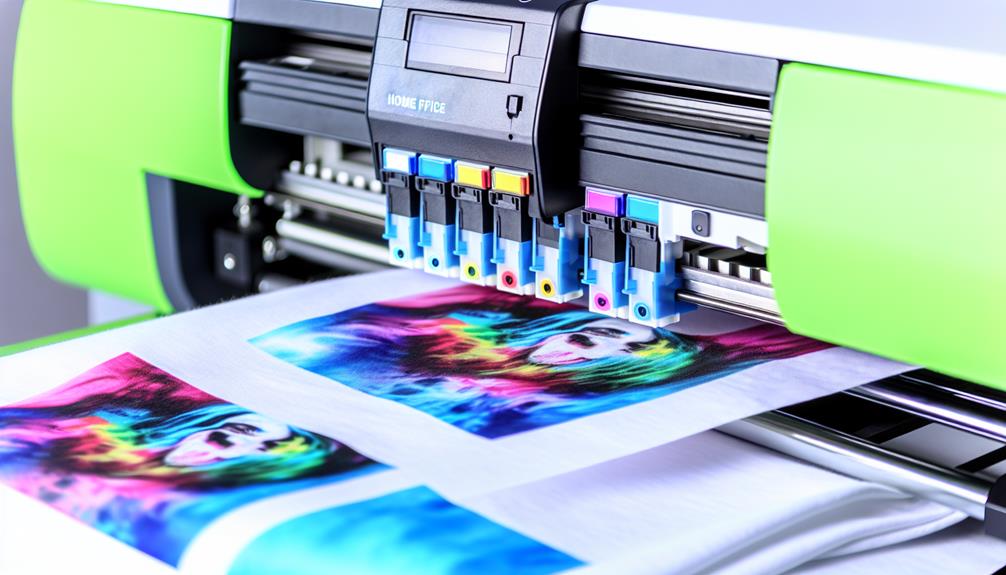
Why Direct to Film Printing is the Future of Custom Apparel
In recent years, the custom apparel industry has undergone a significant transformation, paving the way for innovative technologies that cater to an ever-growing demand for unique and personalized clothing. One such breakthrough is Direct to Film (DTF) printing, a method that's swiftly gaining traction among fashion enthusiasts and businesses alike. In this article, we'll explore why DTF printing is poised to become the go-to choice for custom apparel in the future.


What is Direct to Film Printing?
Direct to Film printing, often abbreviated as DTF, is a revolutionary printing technique that allows designs to be printed directly onto a specialized film. Once printed, these designs can be transferred onto garments using heat and pressure. This technique combines aspects of traditional screen printing, digital printing, and heat transfer methods to produce vibrant, detailed prints on a variety of fabrics.
How DTF Printing Works
The process begins with a digital design that is then printed onto a film using a direct to film printer. The ink used in DTF printing is specially formulated to bond with the film’s surface. After the design is printed on the film, it is treated with an adhesive powder that helps transfer the ink effectively onto fabric.
Benefits of Direct to Film Printing
Why Direct to Film Printing is the Future of Custom Apparel
The future of custom apparel looks bright with DTF printing at the forefront of innovation. As consumers increasingly seek personalization and expression through their clothing choices, businesses must adapt by embracing new technology that meets these demands.
Trends Driving DTF Adoption in Custom Apparel
Understanding DTF Transfers
What Are DTF Transfers?
DTF transfers are pre-printed films that carry designs ready for application on textiles through heat transfer processes. They simplify customization by allowing multiple designs on one sheet, making them cost-effective for small orders.
How Are DTF Transfers Made?
Why Choose DTF over Other Printing Methods?
When comparing Direct to Film printing with other popular options like Heat Transfer Printing and Screen Printing, several factors come into play:
| Feature | Direct to Film | Heat Transfer | Screen Printing | |---------------------------|----------------|---------------|-----------------| | Color Vibrancy | Excellent | Good | Very Good | | Fabric Compatibility | High | Moderate | Limited | | Setup Time | Quick | Quick | Long | | Cost per Unit (Low Volume)| Low | Moderate | High | | Detail Level | High | Moderate | Moderate |
The Competitive Edge of Using the Best DTF Printer
Choosing the best DTF printer can significantly impact your production capabilities and print quality:
Applications of Direct to Film Printing in Fashion
Custom T-Shirts
DTF printing excels at producing vibrant graphics and detailed images on t-shirts, making it ideal for both personal use and commercial ventures.
Athletic Wear
For brands focusing on sportswear or activewear, utilizing direct-to-film techniques ensures durability while maintaining breathability in fabric performance.

Fashion Merchandise
From bespoke pieces in boutique shops to large-scale branded merchandise for events or promotions – when it comes down to versatility and personalization in fashion, nothing beats DTF!
Challenges Facing Direct to Film Printing Technology
Despite its numerous advantages, there remain challenges within this evolving technology:
Frequently Asked Questions about DTF Printing
1. What materials can I use with DTF printing?
You can use cotton, polyester blends, nylon fabrics – basically any material suitable for heat transfers!
2. Is there a limit on colors I can print using DTF?
Not at all! Since it works similarly as digital printers do; you can print full-color images without limitation!
3. How durable are prints made through direct-to-film processes?
When applied correctly with appropriate care instructions followed post-printing (like washing inside out), results last long!
4. Can I layer prints when using direct-to-film?
Definitely! You’re not restricted here; layering adds depth & dimension which enhances overall aesthetic appeal!
5. How does pricing compare between different custom apparel printing services?
DTF tends towards being more cost-effective especially if you’re dealing with smaller runs unlike bulk orders needed elsewhere!
6. Do I need special training before starting my own business focusing on dtf transfers?
While prior knowledge helps immensely; many resources exist online tailored specifically towards novices eager about diving into this venture!
Conclusion
As we've explored throughout this article titled "Why Direct to Film Printing is the Future of Custom Apparel," it's evident that direct-to-film technology stands as a game-changer within custom apparel manufacturing processes today! From its vibrant color capabilities through diverse applications across various industries down towards meeting consumer demand — there’s no denying its potential growth trajectory remains promising ahead!
With ongoing advancements leading towards increased accessibility combined alongside eco-conscious practices shaping modern fashion trends further solidifies why investing time learning about dtf might just be your next entrepreneurial endeavor worth pursuing!